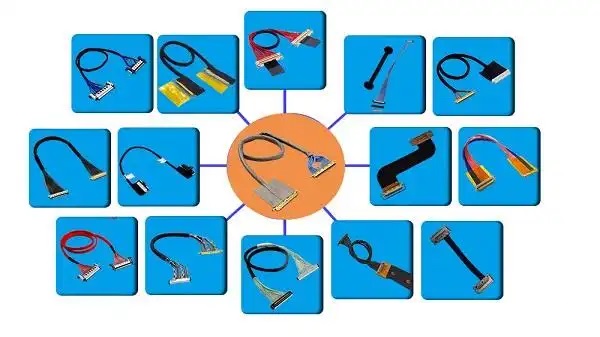In daily life and work, cables, as an important link for equipment connection, are often overlooked. However, the quality of cables directly determines the performance of equipment and affects the stability of data and signals. Today, let's talk about: Where exactly is the difference between ultra-thin coaxial cables and ordinary cables? How big is the performance gap? And why are more and more high-end devices starting to use ultra-thin coaxial cables.

What is ultra-fine coaxial cable?
Micro coaxial cable is a cable with an extremely small diameter, similar in structure to traditional coaxial cables. It consists of an inner conductor, an insulating layer, a shielding layer, and an outer sheath. Compared to ordinary ribbon cables or multi-core cables, micro coaxial cables have significant advantages in terms of anti-interference ability, signal integrity, and flexibility, and are therefore widely used in precision equipment and high-speed high-frequency data transmission.

Polarized vs. Standard Cable: Core Performance Comparison
Why is your equipment worth choosing ultra-fine coaxial cable?
Lower signal loss, more stable data
Ordinary cables are prone to signal attenuation under long-distance or high-frequency transmission, which may lead to issues such as blurred images, data lag, or frame loss. In contrast, extremely thin coaxial cables, utilizing high-quality copper conductors and multiple shielding structures, can effectively reduce signal loss and ensure high-quality data transmission.
Strong anti-interference ability, high environmental adaptability
Whether it is office, industrial equipment, vehicle-mounted systems, drones, or medical instruments, complex electromagnetic environments may interfere with signals. The excellent anti-interference design of extremely thin coaxial cables ensures that data is not lost or mixed.
Super soft, more flexible installation
Ordinary cables are prone to breakage or damage, while ultra-fine coaxial cables have a small diameter and low bending radius, which are very suitable for narrow spaces and frequently moving parts, greatly enhancing the flexibility of equipment installation.

Which scenarios strongly recommend the use of ultra-fine coaxial cable?
High-definition camera and monitoring equipment
High-speed storage devices (SSD, PCIe interface)
Medical testing equipment
Drones, robots, and vehicle systems
High-definition screen connection (FPD, LVDS, eDP)

Although the cable volume is small, its role should not be overlooked. Under low-speed, short-distance environments, ordinary cables may suffice, but in the face of high-frequency, high-speed, and strong interference scenarios, extremely thin coaxial cables are the best choice for stability and reliability.
We have long been focused on the design and customization of high-speed signal cables and ultra-fine coaxial cables, committed to providing customers with stable and reliable high-speed interconnect solutions. If you have any related needs or would like to learn more, please contact: Manager Zhang.
18913228573 (WeChat number)。



